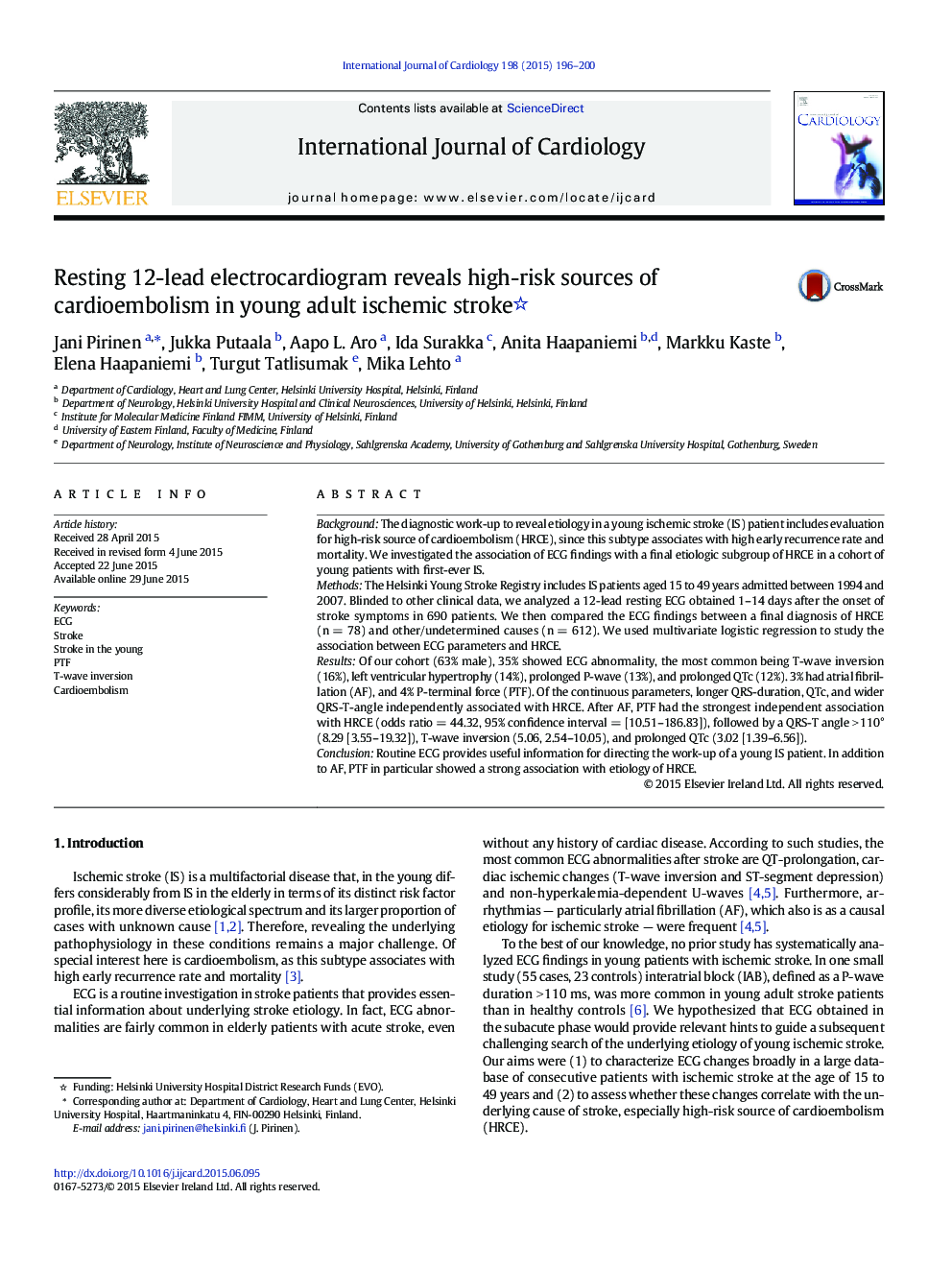| کد مقاله | کد نشریه | سال انتشار | مقاله انگلیسی | نسخه تمام متن |
|---|---|---|---|---|
| 2929019 | 1576154 | 2015 | 5 صفحه PDF | دانلود رایگان |
BackgroundThe diagnostic work-up to reveal etiology in a young ischemic stroke (IS) patient includes evaluation for high-risk source of cardioembolism (HRCE), since this subtype associates with high early recurrence rate and mortality. We investigated the association of ECG findings with a final etiologic subgroup of HRCE in a cohort of young patients with first-ever IS.MethodsThe Helsinki Young Stroke Registry includes IS patients aged 15 to 49 years admitted between 1994 and 2007. Blinded to other clinical data, we analyzed a 12-lead resting ECG obtained 1–14 days after the onset of stroke symptoms in 690 patients. We then compared the ECG findings between a final diagnosis of HRCE (n = 78) and other/undetermined causes (n = 612). We used multivariate logistic regression to study the association between ECG parameters and HRCE.ResultsOf our cohort (63% male), 35% showed ECG abnormality, the most common being T-wave inversion (16%), left ventricular hypertrophy (14%), prolonged P-wave (13%), and prolonged QTc (12%). 3% had atrial fibrillation (AF), and 4% P-terminal force (PTF). Of the continuous parameters, longer QRS-duration, QTc, and wider QRS-T-angle independently associated with HRCE. After AF, PTF had the strongest independent association with HRCE (odds ratio = 44.32, 95% confidence interval = [10.51–186.83]), followed by a QRS-T angle > 110° (8.29 [3.55–19.32]), T-wave inversion (5.06, 2.54–10.05), and prolonged QTc (3.02 [1.39–6.56]).ConclusionRoutine ECG provides useful information for directing the work-up of a young IS patient. In addition to AF, PTF in particular showed a strong association with etiology of HRCE.
Journal: International Journal of Cardiology - Volume 198, 1 November 2015, Pages 196–200
